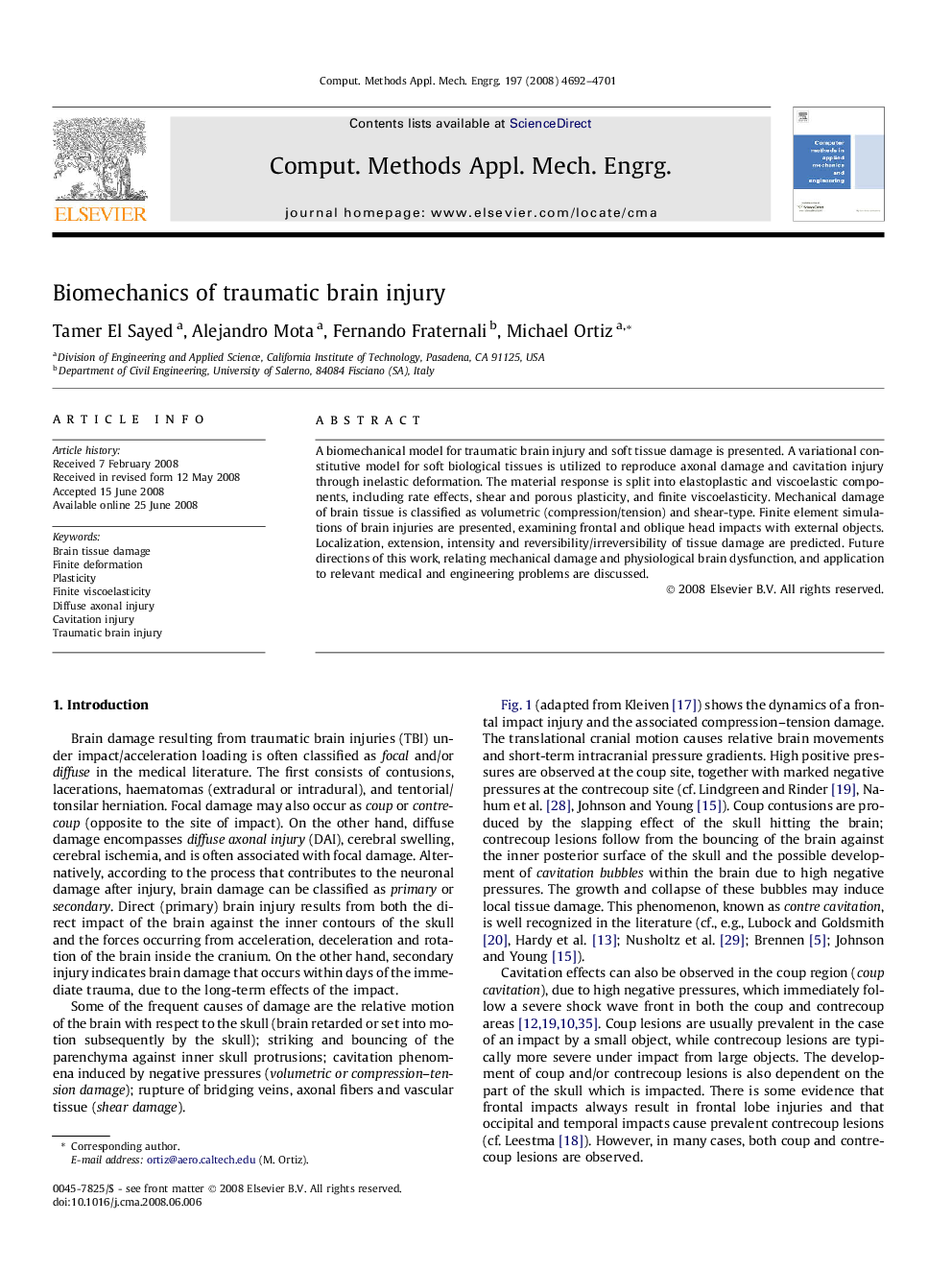| Article ID | Journal | Published Year | Pages | File Type |
|---|---|---|---|---|
| 499468 | Computer Methods in Applied Mechanics and Engineering | 2008 | 10 Pages |
A biomechanical model for traumatic brain injury and soft tissue damage is presented. A variational constitutive model for soft biological tissues is utilized to reproduce axonal damage and cavitation injury through inelastic deformation. The material response is split into elastoplastic and viscoelastic components, including rate effects, shear and porous plasticity, and finite viscoelasticity. Mechanical damage of brain tissue is classified as volumetric (compression/tension) and shear-type. Finite element simulations of brain injuries are presented, examining frontal and oblique head impacts with external objects. Localization, extension, intensity and reversibility/irreversibility of tissue damage are predicted. Future directions of this work, relating mechanical damage and physiological brain dysfunction, and application to relevant medical and engineering problems are discussed.
